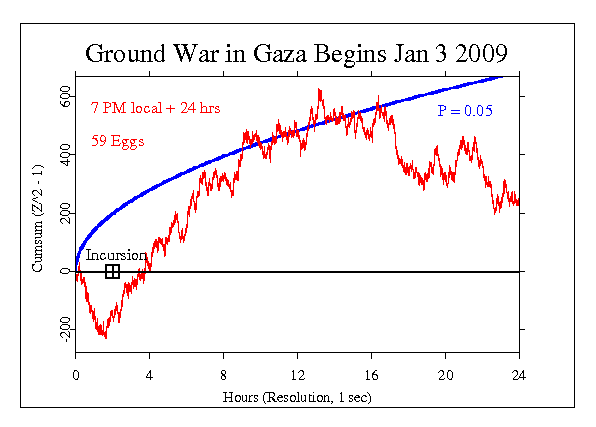|
After several days of air attacks on Gaza with the intent of
stopping the persistent rocket attacks by Hamas fighters on
southern Israel, the Israeli army invaded the Gaza strip.
The ground war began on Jan 3 2009 about 9 p.m. local time.
Here is an excerpt from an article by Richard Boudreaux, in
the Los Angeles Times January 4, 2009.
JERUSALEM - Israeli troops and tanks invaded the Hamas-ruled
Gaza Strip late Saturday after eight days of punishing
airstrikes failed to halt the militant Palestinian group's
rocket fire into Israel.
Gun battles could be heard from Gaza City as artillery
rounds lighted the night sky. Columns of tanks and infantry,
backed by helicopter gunships, pushed nearly a half-mile
into the territory from three directions.
Israeli officials said they did not intend to occupy Gaza
but did expect a lengthy battle.
"This will not be easy and it will not be short," said Ehud
Barak, the Israeli defense minister.
Hamas issued a defiant statement saying Gaza would "become a
graveyard" for Israeli soldiers.
The ground offensive, known as Cast Lead, was aimed
primarily at Hamas rocket-launching facilities, Israeli
officials said. Some of those sites are in open fields, but
many are hidden across Gaza in densely populated areas.
The GCP hypothesis test was set for a 24 hour period beginning two
hours before the incursion into Gaza. This occurred at 21:00
local time and the GCP event started at 19:00 (17:00 GMT).
The result is Chisquare 86640.958 on 86400 df, for a p-value
of 0.281 and Z=0.581. The cumulative deviation graph shows an
interesting picture of a sharp inflection very close to
the time of the incursion and a strong positive deviation
that continues for 8 or 10 hours. (But see the cautionary
note after the figure.)

It is important to keep in mind that we have only a tiny
statistical
effect, so that it is always hard to distinguish signal from
noise. This means that every "success" might be largely
driven by chance, and every "null" might include a real
signal overwhelmed by noise. In the long run, a real effect
can
be identified only by patiently accumulating replications of
similar analyses.
|